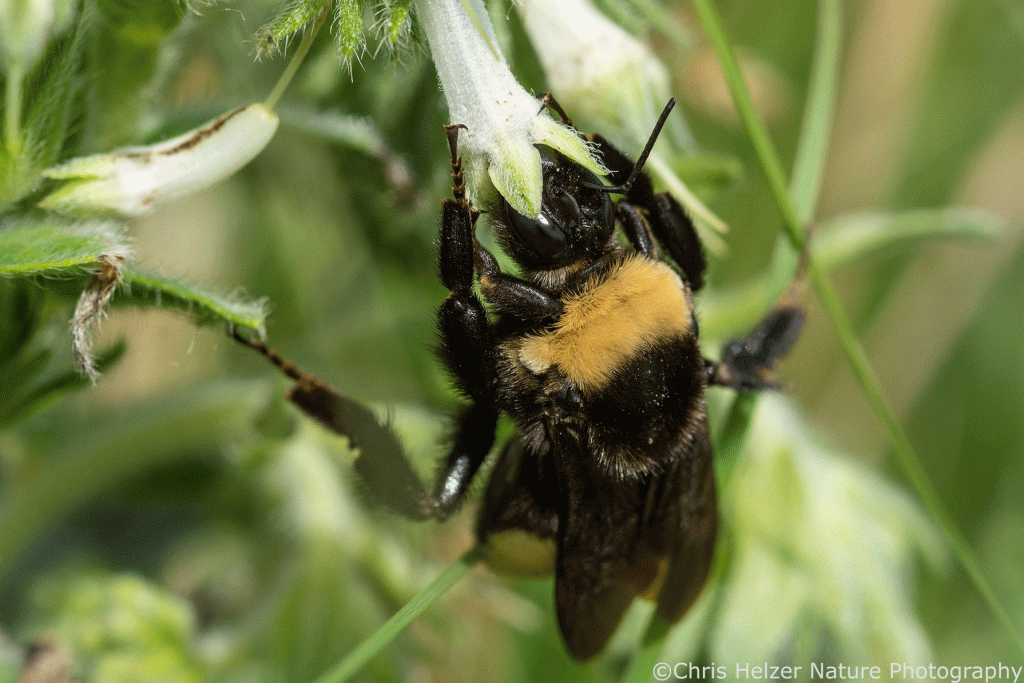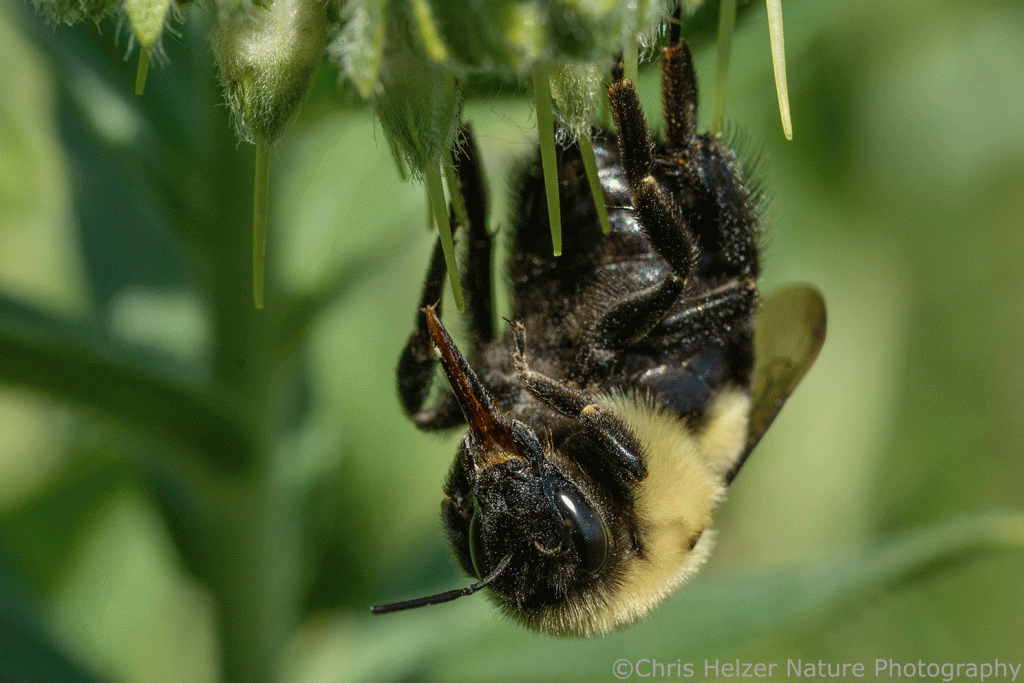False gromwell, aka marbleseed (Onosmodium molle) is blooming in our local prairies right now and I’ve been out photographing its unique flowers and the invertebrates visiting them. It’s a plant that is pretty widespread and common around Nebraska, especially in the east and north, though not so much in the Sandhills. Cattle don’t tend to graze the plants, so they can be found even in native prairies with a history of overgrazing.

Marbleseed is a very distinctive looking plant. Its flowers are particularly interesting looking, and describing them can be tricky. In a way, they look like white flowers that haven’t opened yet. Or maybe like little white sock puppets sticking their tongues out?
The Flora of Nebraska has a much more technical and precise description for those of you fluent in botanical terminology:
“Flowers well developed but not showy; sepals lanceolate, strigose, united at the very base; corolla tubular, 7-15 mm, with 5 erect, acute, greenish to yellowish-white lobes, without fornices; stamens inserted in the upper 1/3 of the tube, the anthers longer than the filaments, included; style long-exserted, persistent; gynobase flat.” – The Flora of Nebraska
I expect that clears things up for you? If not, here are a couple photos that show the flowers up close.


Given the unique shape of the flowers, you’d probably think pollination might be difficult for some species. You’d be right. I mainly see them visited by bumble bees, though I’ve read that honey bees and even some smaller bees can sometimes gain access as well (I’ve never seen that) as well as other insects like true bugs and ants.
Earlier this week, I had the chance to photograph several bumblebees demonstrating their technique for obtaining pollen and nectar from the flowers. All of them were basically just pushing their faces into the flowers and forcing them open. That’s a perfectly reasonable approach if you’re big and strong enough to do that, but it helps explain why many smaller bees don’t seem interested or able to follow suit.



As the ‘marbleseed’ nickname implies, the seeds are hard and round. They’re very similar to those of puccoons, which isn’t surprising since they’re fairly closely related. I don’t know what eats them but I’ve found little caches of them stored in prairie (often exposed by a prescribed burn) that I assume were collected by mice.
According to John Hilty’s excellent Illinois Wildflowers website, there are several insects that are specialist feeders on the leaves, stems, and/or roots of the plant. The abundant stiff hairs, though, make them unattractive to many larger animals, and that avoidance is further enhanced by the fact that the foliage contains toxins (alkaloids). That’s not a bad combination of defense mechanisms.
It’s rare to see thick patches of false gromwell in the prairies I know. It seems to occur as scattered plants, though some prairies do have quite a few of them. I don’t think it enjoys strong competition from other plants or really productive soils (two factors that are correlated). Instead, it’s usually in drier soils or hillsides where growth conditions, aided by large grazers, help limit competition.
We’ve had great luck getting marbleseed to grow in our cropland restorations at the Platte River Prairies and it is spreading in our family prairie too. Apparently, the bumble bees are good at their job and facilitating the development of lots of seeds. I’m glad – it’s a fun species to have around.


👏👏👏📷✍️🌹
False Gromwell is one of my prairie favorites, such a unique white flower, beautiful in its own way. I’ve run into botanists who favor the old scientific name (Onosmodium molle) because it supposedly translates to “sweet donkey’s breath” and who wouldn’t like that?! The new name is Onosmodium bejariense, but I haven’t a clue what that translates to.
Love False Gromwell! It is doing well on our small pasture (which was heavily grazed before we came here 20 years ago)…yes the Bumblebees are constantly working them.
I love your sense of humor!!!Julie
You are talented